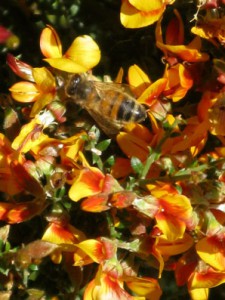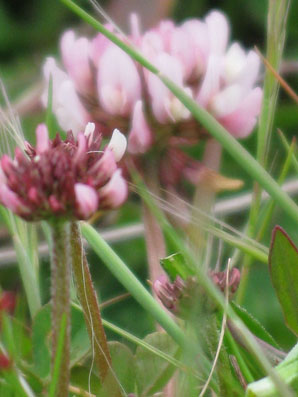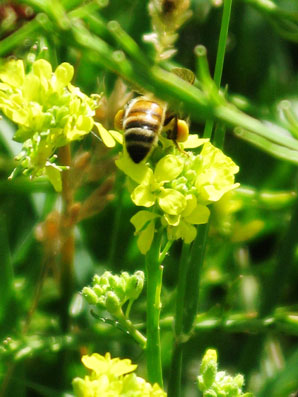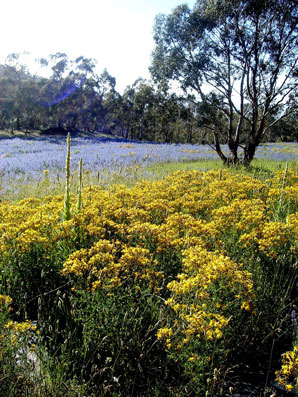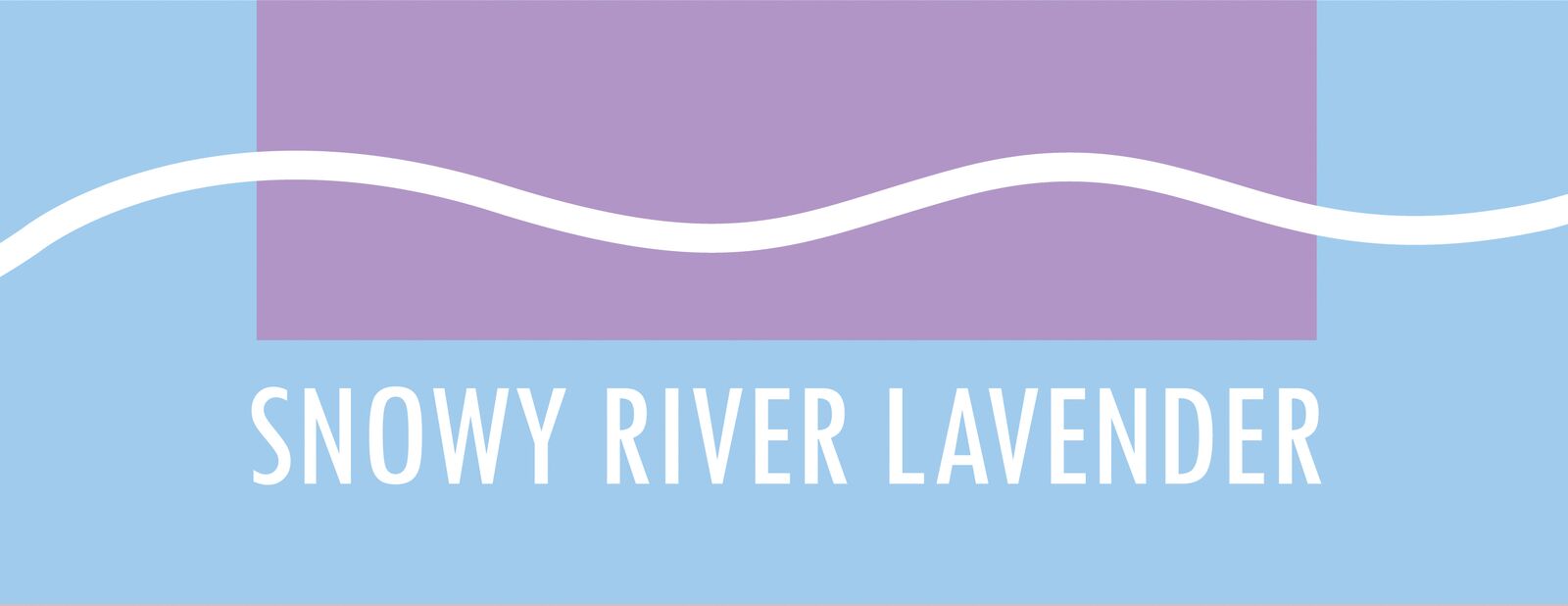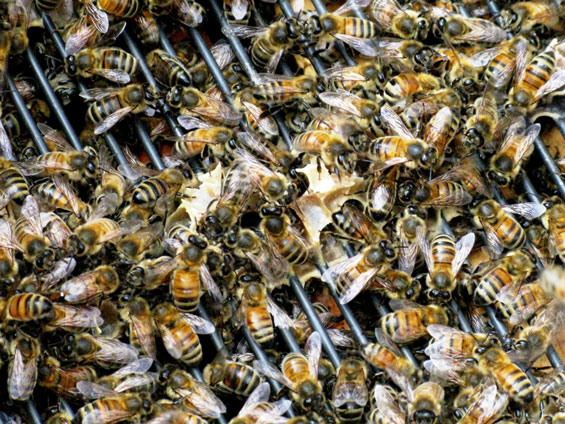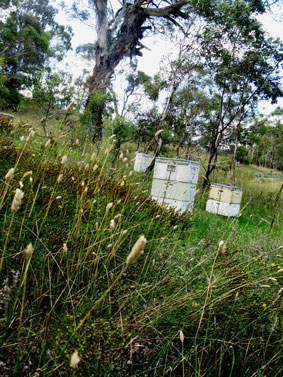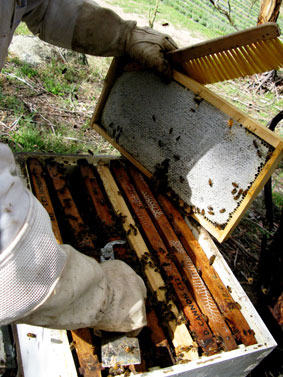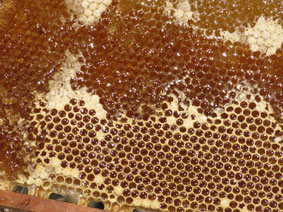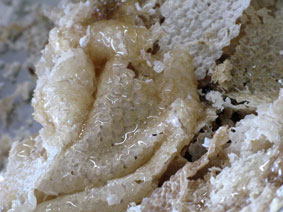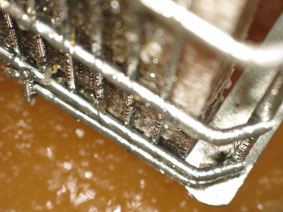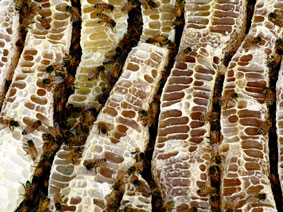THE HIVES AT SNOWY RIVER LAVENDER
SNOWY RIVER LAVENDER’S APIARY
Bees are natural workers and organisers, and hives which are healthy are largely self sustaining. Snowy River Lavender’s honey bees live full time on the farm working the seasonal blooms, native, wild and farmed. The bio-diverse environment the bees live in means the honey produced can be the result of multiple floral sources. We distinguish our honey by the seasons and the dominant flowerings responsible for a honey flow. A honey flow occurs in times of floral abundance when the bees produce more honey than can be used for their own sustenance and we only take honey at this time. Our summer honey flow is a yearly event due to the abundance of lavender flower we farm and distil for essential oil. Our spring and autumn honey flows are occasional events, dependent on climatic conditions and nature’s seasonal bounty.
BEES AND LAVENDER
With many and increasing acres of lavender in bloom thru the summer months this flower is regarded the dominant floral source for our Summer Honey. Bees and lavender are a beautiful synergy we all feel privileged to witness. Lavender provides nectar and pollen to the bees and the bees promote plant reproduction starting the hormonal reaction seminal in each flower’s seed set the process which also facilitates the flowers yield of essential oil. There is a 15 day window after the bee visits the flower when the essential oil yield is optimum, this is a major factor in determining when to harvest. As well as the essential oil, honey is another beautiful outcome of this union we can all enjoy. We have not had our honey tested and the farms biodiversity means that we can’t guarantee species specific honey however anyone visiting the farm in summer and seen the bees at work can be in no doubt that lavender is the primary contributor to our honey harvested at this time of year. Our Summer Honey is liquid amber with a refined sweetness and a lemony, ‘lavendy’ depth. If kept cool our Summer Honey granulates to smooth buttery, fudge like consistency.
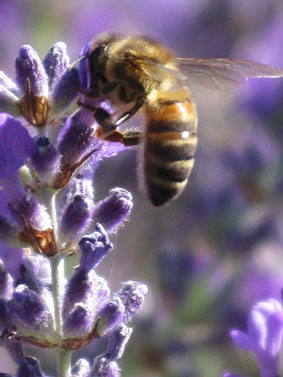
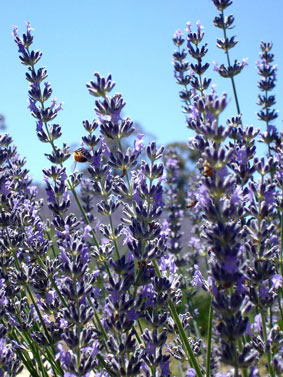
HONEY HARVEST
While having a stable life on the farm is positive for the bees in that it limits hive stress and potential for disease. However, this factor also means the hives fortunes fluctuate with the climatic conditions and its impact on the plants within the farms landscape from which their forage is derived. For most of the year, even if forage is not enough to produce a honey flow, there is usually enough, for the hives to be self sufficient in maintaining their strength. We leave a full box of honey, built up through the summer, to sustain them through the often freezing winter months. Monitoring the availability of forage and the productivity of the queen are central to our hive management practices, both are important factors in maintaining the strength of the hive. Bees collect nectar and pollen, and make and store honey, for their own nourishment. During seasons when flowers are abundant we check the hives at regular intervals so we can determine when a honey flow has occurred and this is the only time we harvest honey.
HONEY PRODUCTION
Our honey production is small scale and our extraction facility is similarly modest however we believe our processes produce a high quality product. The honey we produce remains in its raw state because we use cold extraction methods and minimal processing. The only heat used in this process is the de-capping, a process where the fine film of wax covering the honeycomb is cut away so the honey can be released into the extractor. The cappings removed are melted down into high grade nuggets of buttery gold wax useful for soap and cosmetic products. Once the honey frame has been de-capped it is placed, 2 frames at a time, in our manual extractor. Extraction is based on centrifugal force with the honey spun out into the extraction barrel ultimately slipping down the barrel walls to the base where it accumulates to be gated out when sufficient amounts warrant this process. Finally as the honey is gated out of the extractor it is strained twice for clarity and stored in food grade 25 litre plastic buckets then lidded and cellared until it is finally sold or utilised in our body care products.
SEASONAL FLORA ON MAJESSE ESTATE
Floral sources of honey flows on the farm include rosemary (Rosmarinus officinalis), Silver Wattle (acacia dealbata), Mountain Merbelia and SubClover in early spring;Snowgum (Eucalyptus pauciflora), briar rose (Rosa ruginosa), Vipers Bugloss (Echium vulgare), Kitten Clover, Clover and Buchan late spring to early summer; Lavender, Lavandin, Vipers Bugloss, St Johns wort, and Mullien mid to late summer; and Eucalyptus, (viminalis and rubida) and Grevillea (rosmarinafolia, victorea, juniperina and diminuta) in autumn and winter. While these flowerings can overlap in different combinations according to climatic factors, all these plants contribute to the unique floral combinations that create our beautiful honeys. We do not produce a lot of honey and it is of limited supply. We sell some table honey to those interested in this boutique product. However, increasingly our bee’s production, both honey and wax, is being utilised in our premium personal and home care products.
